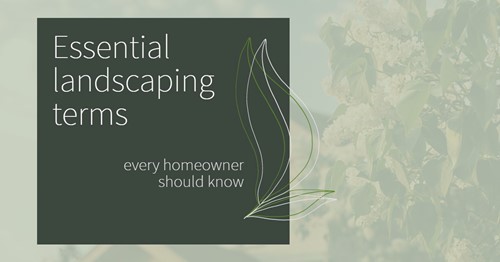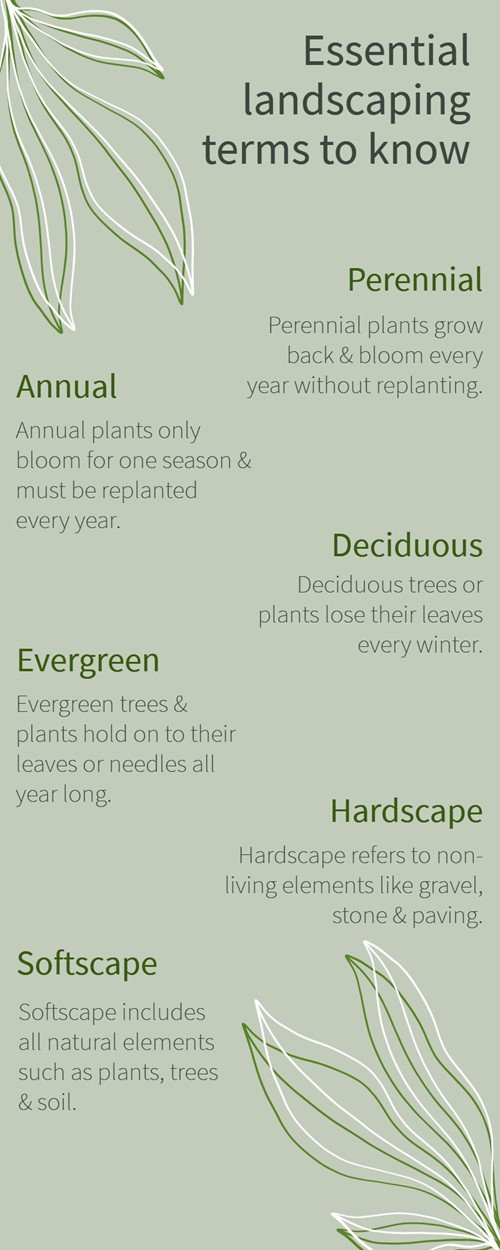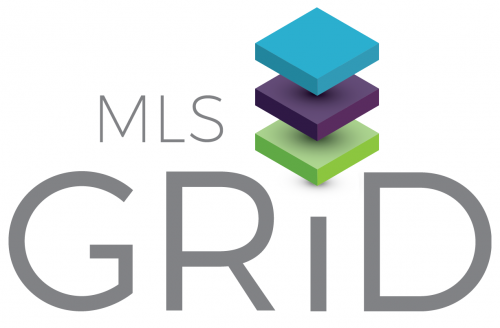
If you’re just getting started with landscaping, it can seem as if it has a language all its own. While landscape designers use specialized terminology to describe the ins and outs of their work, most of the important language overlaps with gardening, architecture and real estate. This means you might already know more about landscaping styles and features than you think!
Regardless of your experience level or goals, knowing the right terms can help you understand the key elements of landscaping. To help, here is a guide to some of the most important terms to know:
Perennial
Perennial is a term used to describe plants that only need to be planted once to grow and bloom every year. Perennial plants and flowers can last multiple years and even decades with the right conditions and care. Well-established perennials are low maintenance landscape features that can increase your property value, whether located in your front yard or backyard.
Annual
As a contrast to perennial plants, annual plants only last one season. This type of plant includes many of the most popular flowering shrubs for increasing curb appeal in outdoor spaces. Annuals make a great landscaping choice for homeowners who like to change the aesthetics of their property’s landscaping regularly.
Deciduous
Deciduous trees or shrubs lose their leaves every winter. However, unlike annual flowers, they don’t need to be replanted every year. Instead, deciduous trees go dormant during the cold season and wake up again in the spring with new growth. Deciduous trees are popular landscaping features for creating shade and adding visual interest to an outdoor space.
Evergreen
Evergreen trees hold on to their leaves or needles all year long. Some popular evergreen shrubs used in landscaping are boxwood, arborvitae and holly. Tall trees like firs, spruce and pine are perfect for adding year-round privacy to landscape design.
Some other evergreen trees like Southern magnolia produce flowers during the spring and summer, but keep their rich green foliage all year.
Hardscape
Hardscape is a term used in landscaping and exterior design to mean any of the non-living or human-made elements in the landscape. Architectural features like paved patios count as hardscape elements, as do retaining walls, pathways and decorative rock features. Hardscape also includes the fixed features surrounding a swimming pool, permanent fire pit or zen garden.
Softscape
In landscaping language, the softscape refers to all the living elements in an outdoor space. This includes trees, shrubs, flowers, grass and other vegetation. Depending on the style of landscape architecture, softscape elements can serve as a focal point or simply tie the design together.

Whether your goals are to impress potential buyers with amazing curb appeal, or create a personal oasis in your backyard, knowing these key landscaping terms will help you on your journey.
About the Author

Nancy Roberts
Nancy Roberts Realty was founded to provide integrity and innovation, honesty and good old-fashioned customer service. Our mission is to provide the most professional real estate services available in Western North Carolina (including Burke, Catawba and Caldwell Counties.) With our expertise and dedication, we will guide you through buying or selling.
Nancy Roberts Realty was founded on integrity, innovation and good old fashioned customer service. We treat you the way we like to be treated with honesty and respect.
We are relationship people, your not just a customer to us but a new friend. We are skilled at matching people with properties - we listen carefully to your needs to find you the perfect property.
Our mission is to provide the most professional real estate services available in Western North Carolina (including Alexander, Burke, Catawba and Caldwell Counties.)
With our expertise and dedication, we will guide you through each step of the buying or selling process, including choosing a lender, home inspector and moving company.
Let us help you find your property today!
